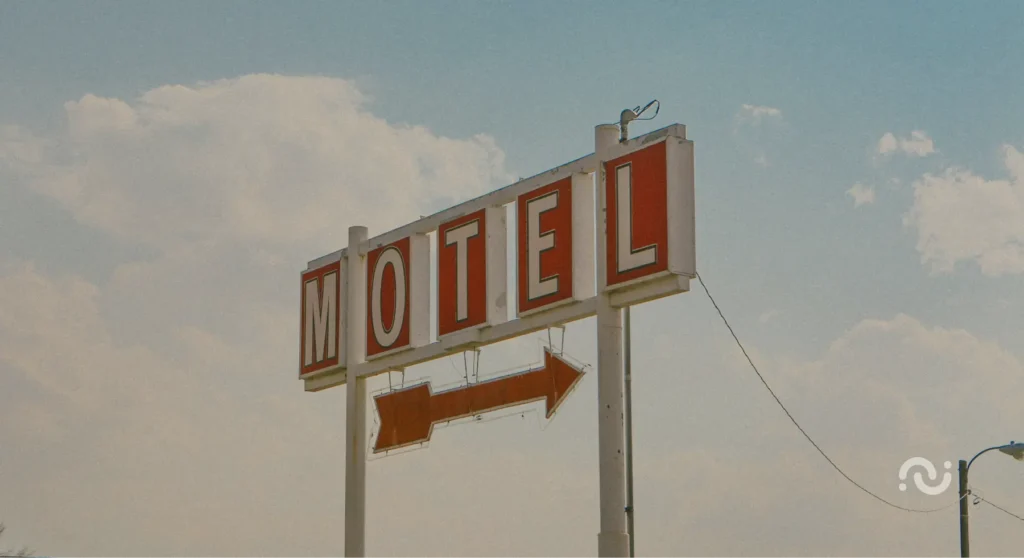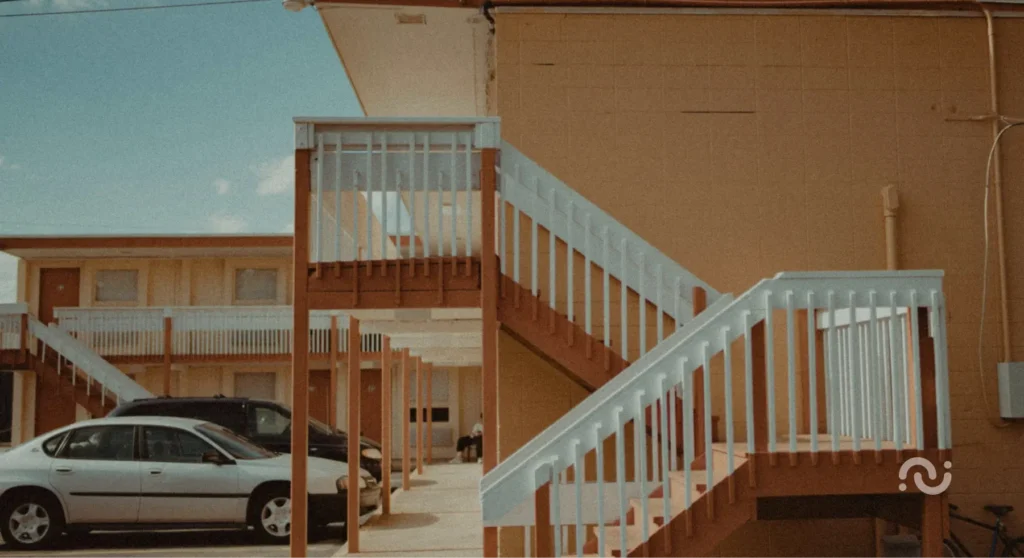All cards are on the table. What's your pick?
Many travellers use the terms “hotel” and “motel” interchangeably, but these accommodation types serve distinctly different purposes. Whether they are planning a weekend getaway, a business trip, or managing hospitality properties, understanding what sets hotels apart from motels can help travellers make better decisions about where to stay – and for hotel and motel owners, how to position their establishment.
The difference between a hotel and a motel extends far beyond simple naming conventions. Each model caters to specific travel needs, offers different service levels, and targets unique customer segments. For hospitality professionals, these distinctions affect everything from operational strategies to marketing approaches and revenue potential.
This comprehensive guide explores the fundamental differences between hotels and motels, examining their unique characteristics, target audiences, and strategic considerations. We’ll also look at how modern technology is helping both types of establishments improve their guest experience and operational efficiency.
The word “motel” combines “motor” and “hotel,” reflecting its origins in early 20th-century America when automobile travel became popular. A motel is designed primarily for short stays, featuring direct access to rooms from the car park without passing through a main lobby or reception area.
The motel concept centres on functionality and convenience. These establishments typically sit along major roads, motorways, or highway intersections, making them easily accessible for road travellers. The architecture is usually horizontal, spanning one or two floors, with guest rooms opening directly onto the car park.
In Europe, the concept of a motel never became as mainstream as in the USA due to more compact cities, older infrastructure, and more frequent towns and villages between cities. In the UK, instead of traditional motels you might see Travelodge, Premier Inn, Ibis Budget, or service area hotels.
Modern motels maintain this core philosophy of simple, accessible accommodation. They offer essential amenities – comfortable beds, private bathrooms, and often Wi-Fi – without the extensive service offerings found in hotels. This streamlined approach keeps costs down while meeting the basic needs of travellers seeking convenient, affordable lodging.
Today’s motels attract various guests: road trippers, business travellers on tight budgets, families seeking budget accommodation, and anyone needing a comfortable place to rest during longer journeys.
Hotels represent a more structured approach to hospitality, typically located in urban centres, tourist areas, or business districts. Unlike motels, hotels are designed to provide comprehensive guest experiences through extensive service offerings and amenities.
The hotel model emphasises experience over mere accommodation. Guests enter through a main lobby or reception area, often encountering concierge services, restaurants, meeting facilities, and various communal spaces. Hotels range from budget-friendly options to luxury establishments, but all aim to provide more than basic lodging.
Hotels cater to different types of travellers: leisure travellers seeking memorable experiences, business guests requiring meeting facilities and professional services, groups attending conferences or events, and extended-stay visitors who need comprehensive amenities. The service level typically includes room service, housekeeping, concierge assistance, and various recreational facilities.
Where motels prioritise efficiency, hotels focus on creating memorable stays through personalised service, comfortable environments, and comprehensive amenities.

Understanding the hotel vs motel distinction requires examining several crucial factors that differentiate these accommodation types:
| Category | Hotel | Motel |
|---|---|---|
| Location and accessibility | Urban centres, tourist hubs, or business districts; often near attractions and amenities. | Along highways, motorways, or suburban areas; designed for easy vehicle access. |
| Room access and layout | Internal corridors; entry via central lobby and hallways. | Direct room access from outside; typically entered from adjacent parking areas. |
| Service offerings | Full-service: 24-hour reception, concierge, room service, fitness centre, business facilities. | Basic services: limited reception hours, Wi-Fi, and possibly continental breakfast. |
| Target clientele | Business travellers, tourists, families, conference attendees, couples. | Road travellers, budget-conscious guests, truckers, and transit passengers. |
| Pricing structure | Generally higher due to location, amenities, and service level. | More affordable, with a focus on value and essential services. |
| Architecture and design | Multi-storey buildings with internal layouts and upscale aesthetics. | Low-rise, horizontal layout; designed for practicality and vehicle proximity. |
Hotels are strategically positioned in urban centres, tourist destinations, or business districts. They’re designed to be destinations themselves, often within walking distance of attractions, restaurants, or business centres.
Motels prioritise roadside accessibility, typically located along major highways, motorways, or suburban areas. Their positioning serves travellers who need convenient stops during longer journeys.
Hotels feature internal corridors and centralised access points. Guests enter through a main lobby and navigate internal hallways to reach their rooms, creating opportunities for service interaction and building security.
Motels offer direct external access to rooms, usually from the car park. This design allows guests to park directly outside their accommodation and enter without passing through common areas.
Hotels provide comprehensive services: 24-hour reception, concierge assistance, room service, restaurants, fitness facilities, business centres, and event spaces. The service model aims to meet diverse guest needs within the property.
Motels focus on essential services: clean accommodation, basic reception hours, and fundamental amenities like Wi-Fi or continental breakfast. The service model prioritises efficiency over comprehensiveness.
Hotels attract diverse guests: leisure travellers, business professionals, conference attendees, couples on romantic getaways, and families seeking full-service experiences.
Motels primarily serve road travellers, budget-conscious guests, truckers, and anyone needing convenient, no-frills accommodation during transit periods.
Hotels typically command higher rates due to extensive services, prime locations, and comprehensive amenities. Pricing varies significantly based on location, season, and service level.
Motels generally offer lower rates, focusing on value-conscious travellers who prioritise cost-effectiveness over extensive amenities.
Hotels feature multi-storey buildings with internal layouts, common areas, and architectural elements designed to create impressive guest experiences.
Traditional motels employ horizontal, low-rise designs with practical layouts that prioritise functionality and direct vehicle access over architectural grandeur.
Hotel operators must focus on creating exceptional guest experiences that justify premium pricing and encourage repeat visits. Success requires several strategic approaches:
Motel operators should focus on efficiency, accessibility, and value delivery to attract their core customer base. Key strategic elements include:
The hospitality landscape continues evolving, and the traditional boundaries between hotels and motels sometimes blur. Some motels upgrade their facilities and services to attract broader markets, while certain hotels adopt motel-like efficiency in specific market segments.

Both hotels and motels benefit from technological solutions that improve guest experiences while reducing operational costs. Artificial intelligence and automation tools help properties of all sizes compete more effectively, regardless of differences between a hotel and a motel.
Hotels use technology to personalise guest experiences at scale:
Motels benefit from technology that automates operations while maintaining their efficiency focus:

For travellers, differences between a hotel and a motel matter depending primarily on specific trip requirements:
Travellers choose a hotel when:
Travellers choose a motel when:
Despite differences between a hotel and a motel, both accommodation types continue to adapt to changing traveller expectations and market conditions. Hotels increasingly focus on unique experiences and local authenticity, while motels embrace technology to provide better service with streamlined operations.
Successful properties in both categories will likely combine their traditional strengths with modern guest expectations for a convenient technology integration, personalised service, and transparent communication.
The fundamental difference between a hotel and a motel – experience versus efficiency – remains relevant, but both models are finding ways to incorporate elements that traditionally belonged to the other category.
Whether you operate a hotel or motel, understanding these distinctions helps inform strategic decisions about service offerings, target markets, and operational approaches. The key is aligning your property’s capabilities with guest expectations while maintaining operational efficiency.
Modern hospitality management tools can help both hotels and motels improve their performance while staying true to their core value propositions. By leveraging appropriate technology solutions, properties can provide better guest experiences while optimising their operational efficiency.
Consider how artificial intelligence and automation might help your property serve guests more effectively while reducing operational complexity. The goal isn’t to fundamentally change your property type, but to optimise performance within your chosen model.
Sign up for our monthly newsletter to receive free resources and updates on impactful AI applications in hospitality.